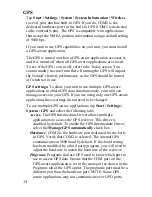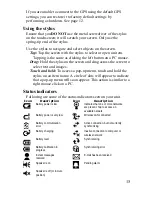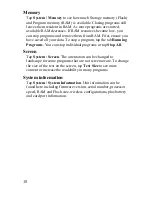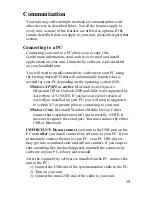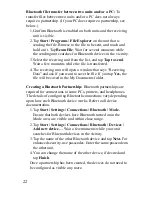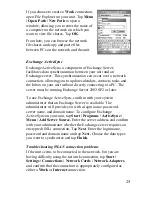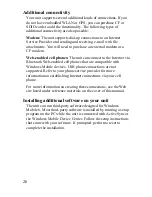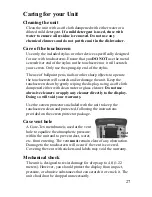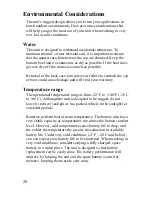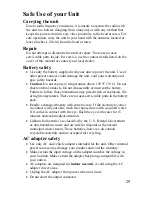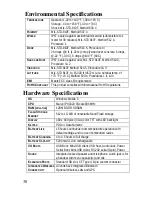
28
Environmental Considerations
The unit’s rugged design allows you to run your applications in
harsh outdoor environments. Here are some considerations that
will help you get the most out of your unit when working in very
wet, hot or cold conditions.
Water
This unit is designed to withstand accidental immersion. To
maintain the unit’s water resistant seal, it is important to ensure
that the quarter turn fasteners on the cap are clamped. Keep the
bottom boot and its connectors as dry as possible. If the boot does
get wet, dry off the contacts as much as possible.
Removal of the back case torx screws or failure to reattach the cap
or boot could cause leakage and will void your warranty.
Temperature range
The operational temperature range is from -22°F to +140°F (-30 C
to +60 C). Although the unit is designed to be rugged, do not
leave it in direct sunlight or in a parked vehicle in the sunlight for
extended periods.
Batteries perform best at room temperature. The battery also has a
very stable capacity as temperatures rise above the human comfort
level. However, cold temperatures cause battery life to drop, and
the colder the temperature the greater the reduction in available
battery life. Under very cold conditions (-4°F / -20 C and below),
you can expect your battery life to be shortened. When working in
very cold conditions, consider carrying a fully charged, spare
battery in a warm place. The unit is designed so that battery
replacement can be easily done. The battery performance will
improve by keeping the unit and the spare battery warm (for
instance, keeping them inside your coat).

